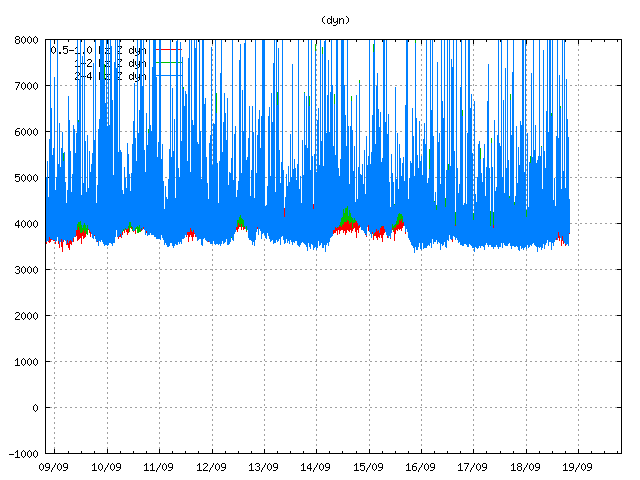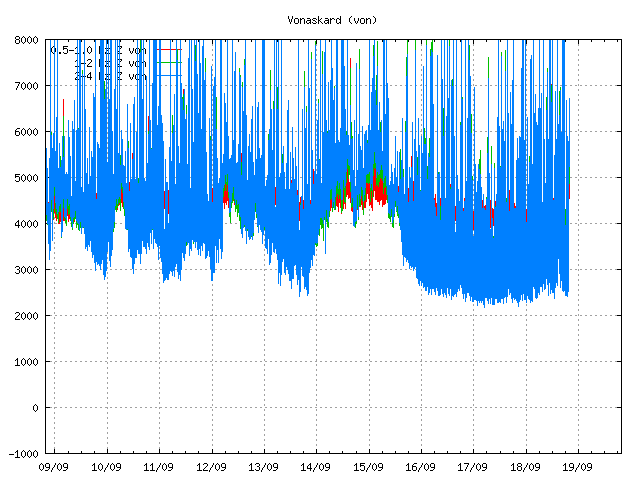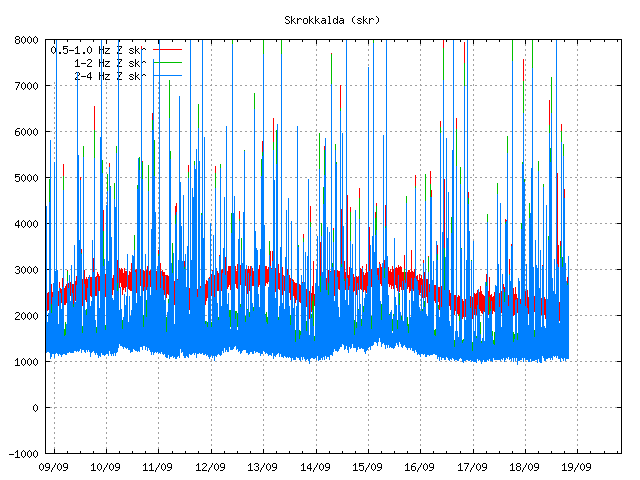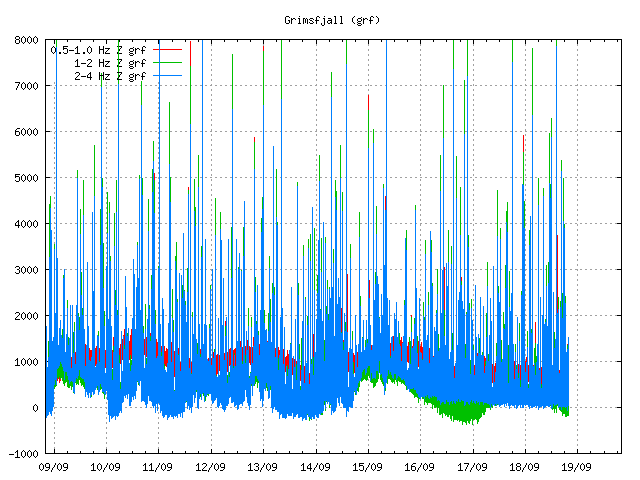This information is going to get outdated quickly.
Current status on Bárðarbunga volcano
- There are now two lava lakes (at least) in the fissure that has been erupting in Holuhraun. The eruption has not yet stopped, but it is less powerful but the flow of magma from the craters has not slowed down based on latest observations.
- Bárðarbunga caldera is getting lower by 80 cm/day according to GPS measurements and other measurements that have been made. Total drop in the caldera so far is 21 meter. Cracks have started to form in the glacier that fills the caldera. Normally there are no cracks in that glacier. Most of the cracks are in the central caldera.
- More magma is flowing into the dyke than out of it. Eruption has not yet increased yet, this also increases the risk of new eruptions along the dyke.
- The central crater in the eruption continues to erupt, other craters have mostly stopped erupting and several of them are just emitting gas now.
- Largest earthquake since midnight was a magnitude 4,7 at 09:32 UTC.
- The lava field continues to flow into Jökulsá á Fjöllum glacier river. It is slowly blocking it, some explosions might take place, but due to the thickness of the lava that does not seem to happen often.
- SO2 pollution is a big problem now in parts of East Iceland. The pollution goes depending on wind, so for the moment it is East Iceland that is having this issue.
- GPS data shows that inflation continues in the dyke. This is because more magma is flowing into it than erupting from as I did mention above.
Icelandic Government preparing for major eruption
It seems that Icelandic government has started to prepare for major eruption in Iceland. This is evident when they put up a banner like this on Rúv website.

Rúv radio blackout alert banner due to an eruption at the bottom of this image. Screen-shot of Rúv.is website.
When the national radio of Iceland sets up a image like that. I take it as they know that things are bad in Bárðarbunga volcano. Same way as I know it. The website in question that the banner connects to can be found here, it has English text.
Updates 12-September-2014
- The amount of SO2 in Reyðarfirði has now around 4000 µg/m³ (at 22:45 UTC). People in that village and nearby area advised to stay indoors and don’t go outside.
- The largest crater in Holuhraun is now getting close to being 70 meters high.
Updates 13-September-2014
- Largest earthquake since midnight was a magnitude 4,9 earthquake at 07:58 UTC. At that same time the caldera dropped 25 cm according to news on Rúv.
- GPS stations show fast movements around Bárðarbunga volcano. This means the current activity is far from over, even there has been a minor drop in activity at the moment.
- Instability in Bárðarbunga volcano continues to increase.
There appears to be a fast inflation in Grímsfjall volcano. It is unclear why this is happening, but it might be due to influence from Bárðarbunga volcano. The sudden inflation in Grímsfjall volcano appears clearly on GPS measurement that are being done on top of the volcano. This might not lead to an eruption, since Grímsfjall volcano can take a lot of magma into its system. The eruption that took place in 2011 was the largest one in at least 140 years. Turns out this was just snow on the GPS antenna. So this is false alarm when it comes to Grímsfjall volcano. - Dangerous levels of SO2 are problem in eastern Iceland and where the wind blows it. Gas at the eruption site is also huge risk to anyone working in close proximity to the eruption site. It is also blocking the view to the eruption at Míla cams, along with dust storm that appears to be taking place now due to wind.
- The eruption at Holuhraun is about the same as yesterday (12-September-2014).
- The eruption is now confined mostly to the main crater in the fissure. Other craters have stopped erupting currently. That might change without warning.
Updates 14-September-2014
- The eruption in Holuhraun seems to be ending. During the day the power of the eruption has dropped. The largest central crater is still erupting, but at a lot less power than yesterday and on 12-September-2014. Eruption has stopped in smaller craters in the eruption fissure.
- The lava has stopped moving forward into Jökulsá á Fjöllum. It no longer has the energy to progress into the glacier river. New fields of lava are forming closer to the crater that continues to erupt.
- Largest earthquake today (when this is written) is a magnitude 5,3 earthquake that took place at 14:06 UTC. Second largest earthquake today was a magnitude 4,0 earthquake that took place at 06:54 UTC.
- The caldera continues to drop. Since this activity has continued to total drop is now 23 meters according to latest measurements (from yesterday). Most drop is taking place in north-east part of the caldera. More information can be found here, text is in Icelandic.
- Harmonic tremor suggest that the pressure is increasing in Bárðarbunga volcano again. There is also high chance of small eruptions taking place under the glacier.
- There is no rapid inflation taking place in Grímsfjall volcano. GPS signal got distorted by snow or ice on the GPS antenna.
News bits 12-September-2014
Stærsti gígurinn í Holuhrauni að ná 70 metra hæð og fer stækkandi (Vísir.is, video, Icelandic)
News bits 13-September-2014
“Like breathing from the exhaust pipe” (Rúv.is)
Botn Bárðarbunguöskju seig um 25 sm (Rúv.is, Icelandic)
Other
This is shorter updated today due to there has not been a lot of change since yesterday and it is Friday.
More on comments
Please remember to be nice to each other. Not everything is known about geology, but please remember that this website deals with facts, science and ideas based on known facts. If your idea sounds crazy, it might just be too crazy for this website. There are places for those ideas elsewhere on the internet. Use them, I don’t know about them so don’t ask.
If your comment is on hold for me to approve it. Please wait. I will get to it. If your comment just vanish it means it was false flagged with my spam system so I have to manually check it. If a spam comment goes appears without me knowing about it, please send me a link to the comment so that I can remove it.
E-mail
I get few emails about the volcano activity in Bárðarbunga. I can answer some of them, but not all of them. I try to put what I know here, so please read it rather than to send me an email. I answer all emails about comments and this website.
Article updated at 19:35 UTC on 12-September-2014.
Article updated at 22:56 UTC on 12-September-2014.
Article updated at 14:54 UTC on 13-September-2014.
Article updated at 22:33 UTC on 13-September-2014.
Article updated at 02:53 UTC on 14-September-2014.
Article updated at 18:17 UTC on 14-September-2014.
Article updated at 18:28 UTC on 14-September-2014.







